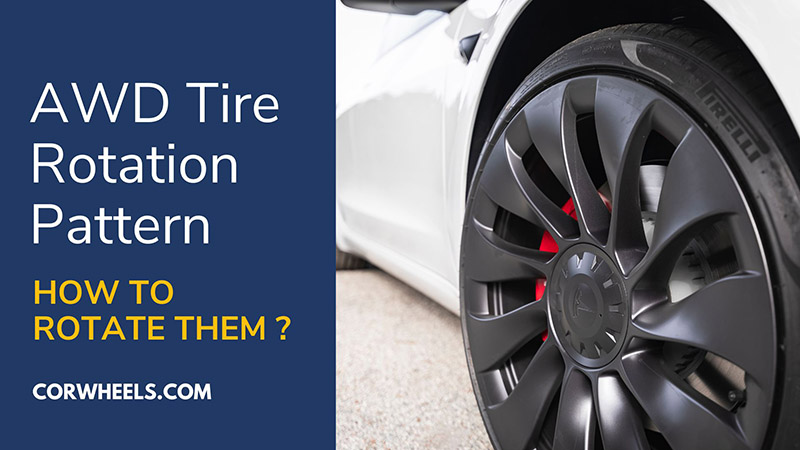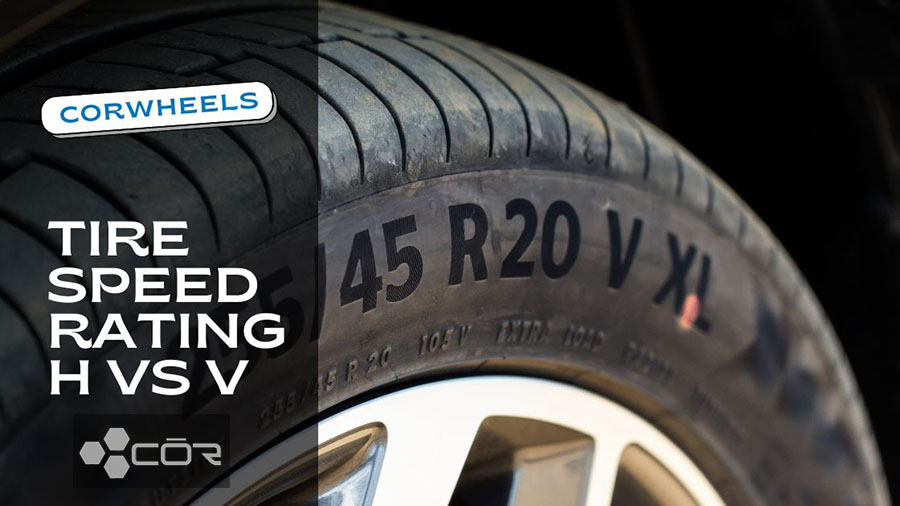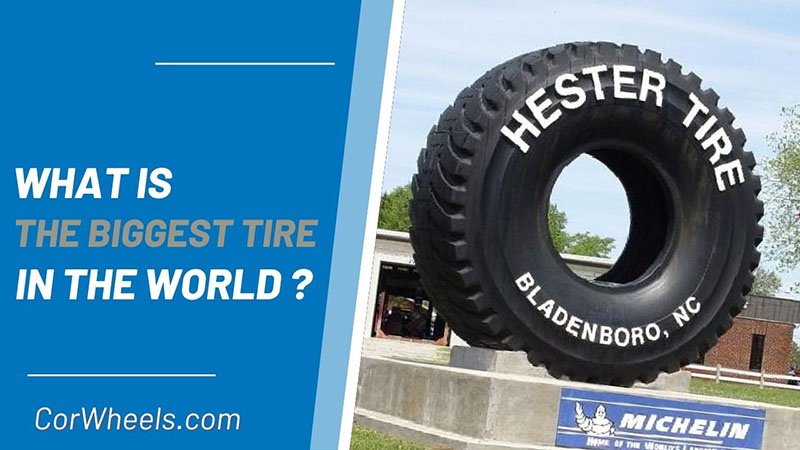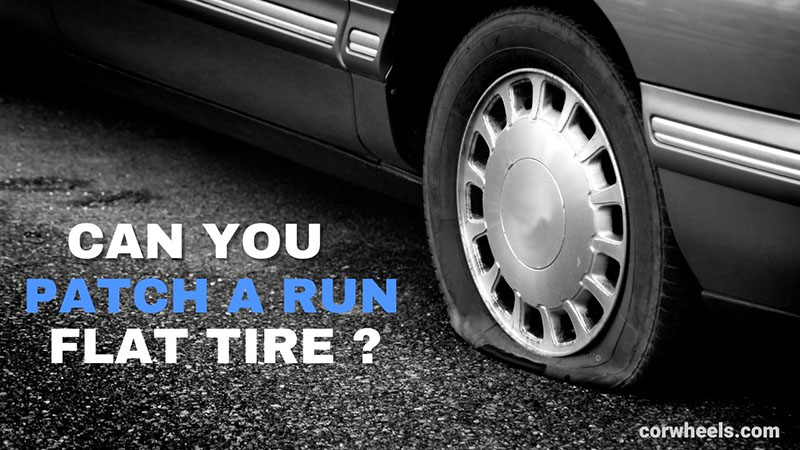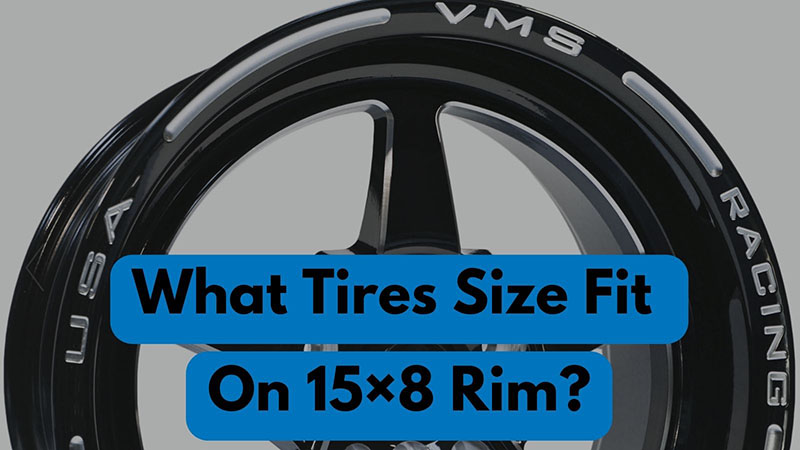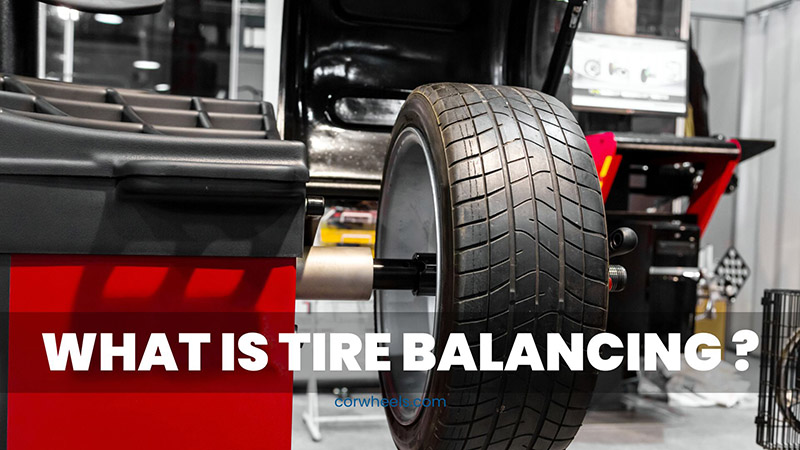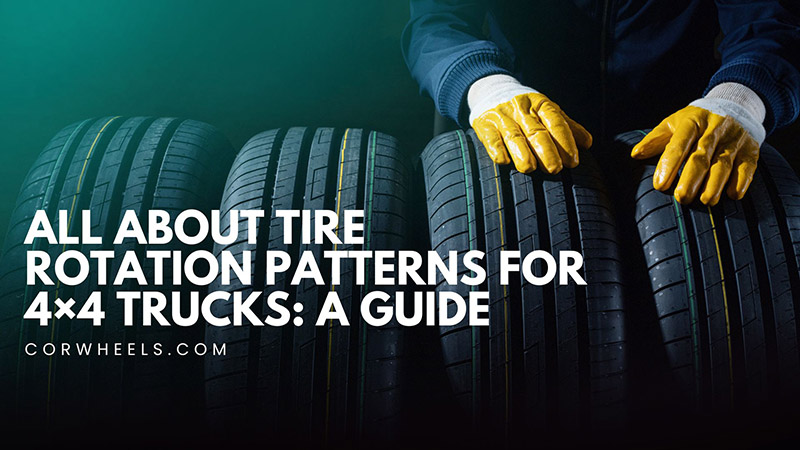All-wheel drive (AWD) model vehicles are becoming increasingly popular thanks to their superior traction and handling in various driving conditions. However, these vehicles require a specific tire rotation pattern AWD to ensure even tire wear and prolong tire life.
Keep reading to learn about the importance of this process and the different tire rotation patterns you can use to keep your tires in optimal condition.
In this article:
What Is AWD Tire Rotation?
Tire rotation diagram AWD describes the process of shifting a vehicle’s tires from one position to another according to a predetermined pattern. Your tires will last longer and wear evenly thanks to this maintenance work.
Most tire manufacturers recommend rotating your tires every 5,000 to 7,500 miles. But this can vary depending on your driving habits, the type of vehicle you have, and the type of tire you use.
Take my Jeep Wrangler, for example. I frequently drive it off the beaten track at weekends to go camping. My commuting route is also on rough and uneven road surfaces. And I have to rotate my tire set every 3,500 miles instead of a 5,000-mile benchmark.
Also, you can get this procedure done when you notice any unusual wear patterns or if your vehicle pulls to one side while driving.
Benefits Of AWD Tire Rotation
Below are the benefits you will get when getting your tire rotated.
- Even Tire Wear: All-wheel drive models distribute power to all four wheels, leading to uneven tire wear. Rotating the tires regularly can help ensure that the tires wear evenly and last longer.
- Improved Traction: Maintaining the grip and handling of the tires through rotation will result in greater performance under all driving circumstances.
- Better Handling: Load and pressure are spread to all four wheels uniformly via AWD systems, which may impact how the car handles. Tire rotation will balance out wear, preserve grip and handling, and enhance overall vehicle performance.
- Longer Tire Life: The additional weight and power distribution in AWD vehicles might make them harsher on the tires. Regular tire rotation will help you increase the tire’s lifespan and reduce the need for expensive tire replacements.
- Improved Fuel Economy: Uneven tire wear may impact the fuel economy due to higher rolling resistance. The tires can be rotated frequently to guarantee even wear, lower rolling resistance, and increase fuel efficiency.
- Enhanced Safety: The increased traction and stability that AWD vehicles are intended to offer can increase overall safety. The grip and handling of the tires can be preserved by rotating them, which improves performance and lowers the possibility of accidents.
All Wheel Drive Tire Rotation Pattern
There are three most common AWD tire rotation patterns: rearward cross, x-pattern, and side-to-side.
Rearward Cross
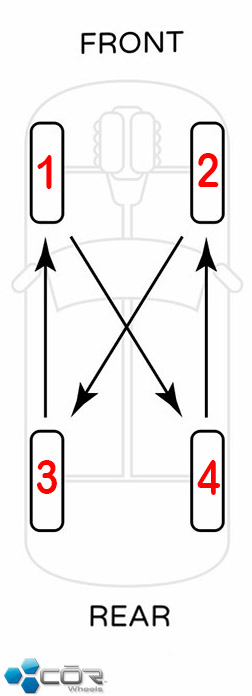
Rearward Cross tire rotation includes crossing the front tires over to the rear axle in an X pattern and moving the rear tires straight ahead to the front axle.
To avoid uneven wear and extend tire life, this pattern makes sure that the tires continue to rotate in the same general direction even as they are moved into a different position.
In my experience, this cross rotational pattern is the best one to go for. It guarantees that after a certain number of rotations, each of my tires rotated to each location on the wheel.
By ensuring the rear tires constantly cross to their opposite sides during each rotation, it also aims to spread out the wear on the rear tires a little bit more evenly.
X-Pattern
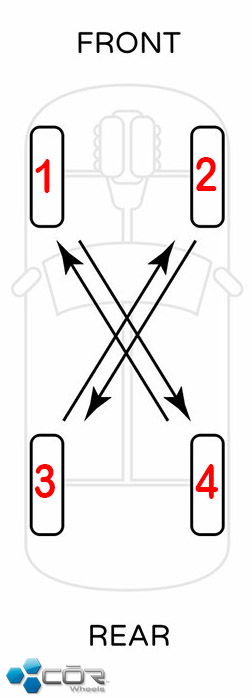
The X-Pattern tire rotation pattern is similar to the Rearward Cross pattern. Still, it crosses the front and rear tires in an X pattern without keeping the original rotating orientation.
This pattern aids in maintaining the best handling and traction under all driving styles while distributing tire wear evenly across all four tires.
Side To Side
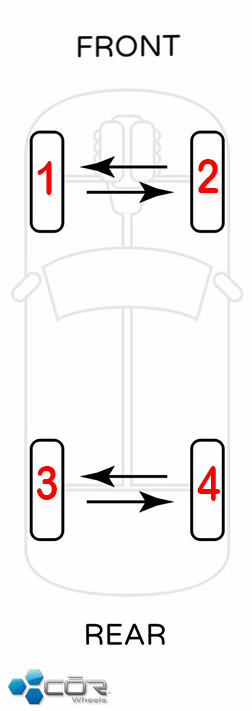
The front and rear tires are alternated throughout the side-to-side tire rotation pattern rather than crossing them in an X pattern. This style is best suited for AWD cars with directional tires that can only be turned from front to rear or back to front while keeping the initial rotating direction.
How To Rotate Tires AWD
By rotating your AWD vehicle’s tires properly and ensuring even wear, you may extend their lifespan while enhancing the car’s handling and safety. Here is what you need to do.
Step 1: Park your vehicle on a level surface and engage the parking brake.
Step 2: Locate the recommended tire rotation pattern in your vehicle’s owner’s manual. AWD tire rotation patterns may differ from those used on front-wheel or rear-wheel drive vehicles due to the AWD’s unique power distribution system.
Step 3: Loosen the lug nuts on each wheel, but do not remove them.
Step 4: Using a floor jack or hydraulic jack, raise the vehicle from one side until the tire is off the ground. Place a jack stand underneath the car to secure it in place.
Step 5: Remove the lug nuts and carefully remove the wheel from the car.
Step 6: Move the tire to the appropriate position based on the recommended tire rotation pattern. Make sure to maintain the correct rotational direction of the tire, as indicated by the directional arrows on the sidewall.
Step 7: Tighten the lug nuts in a star pattern, gradually tightening each lug nut until it is snug.
Step 8: Lower the car from the jack stand and repeat the process for each wheel.
Step 9: Once you have rotated all four tires, use a torque wrench to tighten the lug nuts to the manufacturer’s recommended torque specification. Notice that over-tightening can cause damage to the wheel studs or lug nuts while under-tightening can result in a loose wheel.
Step 10: Check the tire pressure in each tire and adjust as needed according to the recommended pressure specified in the owner’s manual.
Step 11: Test drive the vehicle to ensure that the tires are properly balanced and aligned.
Frequently Asked Questions
Do You Still Rotate Tires On AWD?
Yes. Regular tire rotations are necessary as they can help ensure even tire wear, prolong tire life, improve vehicle handling, and enhance safety.
Should You Rotate Tires On AWD BMWs?
Yes, you should rotate tires on an AWD BMW. BMW recommends tire rotations every 7,500 miles to ensure even tire wear and prolong tire life. To ensure the best handling and performance from your specific BMW model, it’s crucial to adhere to the suggested tire rotation schedule.
How Often Should You Rotate Tires On AWD SUVs?
Most manufacturers suggest rotating tires every 5,000 to 7,500 miles. Still, the frequency of tire rotations for an AWD SUV may vary depending on the manufacturer’s recommendations, driving conditions, and tire wear.
The Bottom Line
AWD tire rotation diagram is an essential reference for maintaining your AWD vehicle’s performance and safety. Don’t neglect this crucial upkeep task, as it can save you money on costly tire replacements and keep you safe on the road.

